Learning different types of language can be fun! Teach second grade language standards with these 5 formal & informal language activities for 2nd grade.
Formal & Informal Language Activities
Second grade Common Core language standards highlight formal and informal language as a key topic to cover during the school year. Students should be able to compare formal and informal uses of English by the time the year is complete.
In order to achieve mastery in this area, students need a variety of opportunities to learn and practice formal and informal language skills. In this post, I’ll share some great activities to help your students practice formal and informal language.

What is Formal & Informal Language?
Formal language is proper language that we use in writing, speaking in public, and when talking to respected adults. It contains correct, proper spelling and grammar, and complete sentences. Formal language usually does not include slang terms and it usually does not have contractions.
Informal language is casual language that we use when talking and communicating with friends and people we know well. It might contain slang, incomplete sentences, or incorrect spelling and grammar.
How to Teach Formal & Informal Language in 2nd Grade
Use these formal & informal language activities to help your second graders learn and practice with these different types of English.
Introduce with an Interactive PowerPoint
Teach the definitions, qualities, and characteristics of formal and informal language with an interactive PowerPoint mini-lesson. Tell students the types of situations that warrant each type of language, and have students try to brainstorm and generate some ideas of their own.
Give plenty of examples of formal language and informal language throughout your lesson. It’s easier to understand the different types of language through a variety of examples.
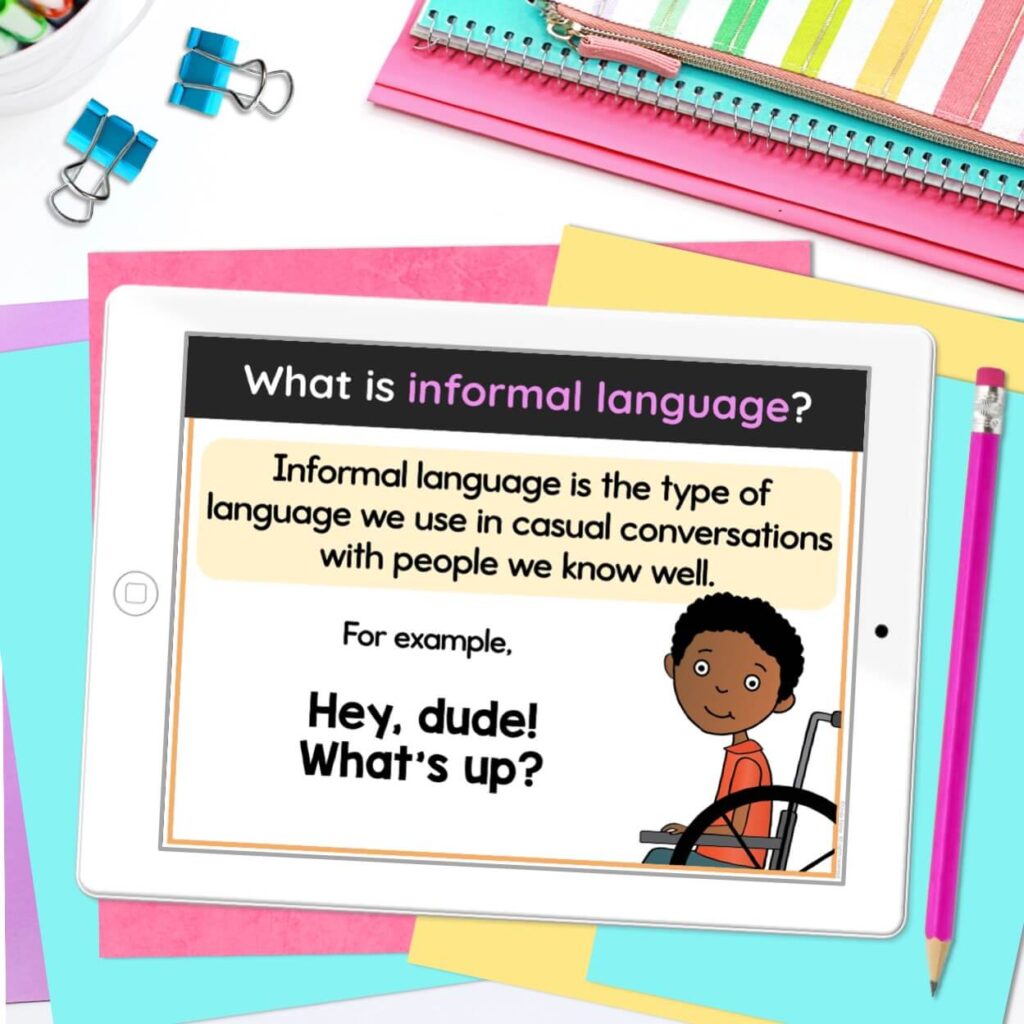
Make sure to incorporate interactive features, like moveable slide parts, in your lessons to help students stay engaged. Also, give opportunities for partner work throughout your lesson to help students learn from each other as they build their understanding of formal and informal language.
Distinguish & Categorize Examples of Formal vs. Informal Language
By the end of your formal & informal language activities, your students need to be able to determine whether language examples are formal or informal. One way to practice this skill is with a language sorting activity.

I use a worksheet to help students practice with these skills during my formal and informal language unit. This is a good introductory activity on the first or second day of your lessons.
Find Examples in a Reading Passage
Give students a reading passage that contains examples of both formal and informal language. Have students underline the formal language examples in one color, and the informal examples in another color.
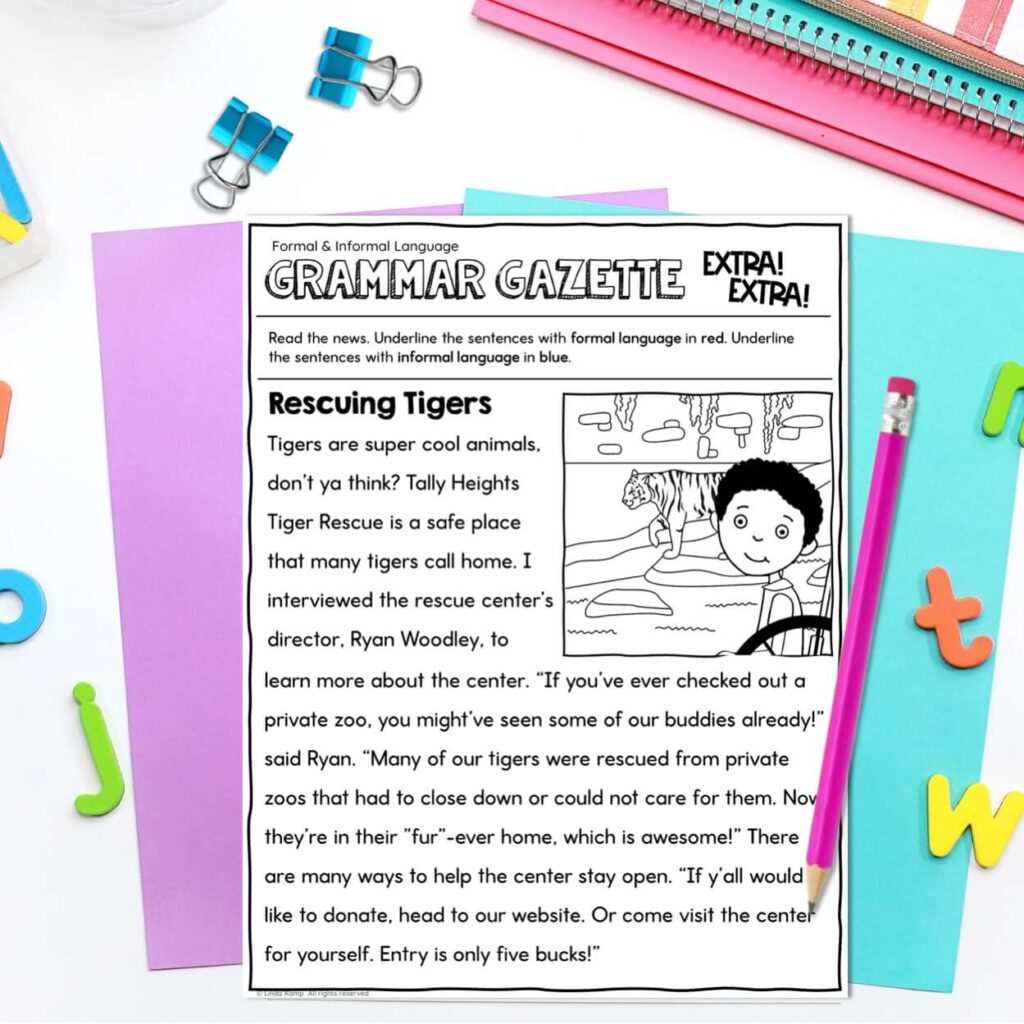
Seeing examples in a reading passage will help students see how each type of language is used in context. With this understanding, students will be able to better apply the skill to their own writing.
Use Task Cards to Practice Different Formal & Informal Language Activities
Task cards are a super versatile activity to use in the classroom. There are so many ways to incorporate task cards and make them work for your needs. Try using them as a center activity, or post the task cards around the classroom for students to do a Roam the Room activity. You can also use them for a whole group activity by projecting them on your board or using them to play Scoot.

Use your task cards to give students an opportunity to demonstrate a variety of skills. Some task cards can ask students to determine if the language given is formal or informal. Other cards can have students read a scenario and determine which type of language should be used. The remaining cards can allow students to practice generating their own examples of formal and informal language.
Take an Assessment to Evaluate Understanding
After teaching and practicing with these formal & informal language activities, have students take a brief assessment that allows you to easily and quickly evaluate their understanding and determine need for further instruction.
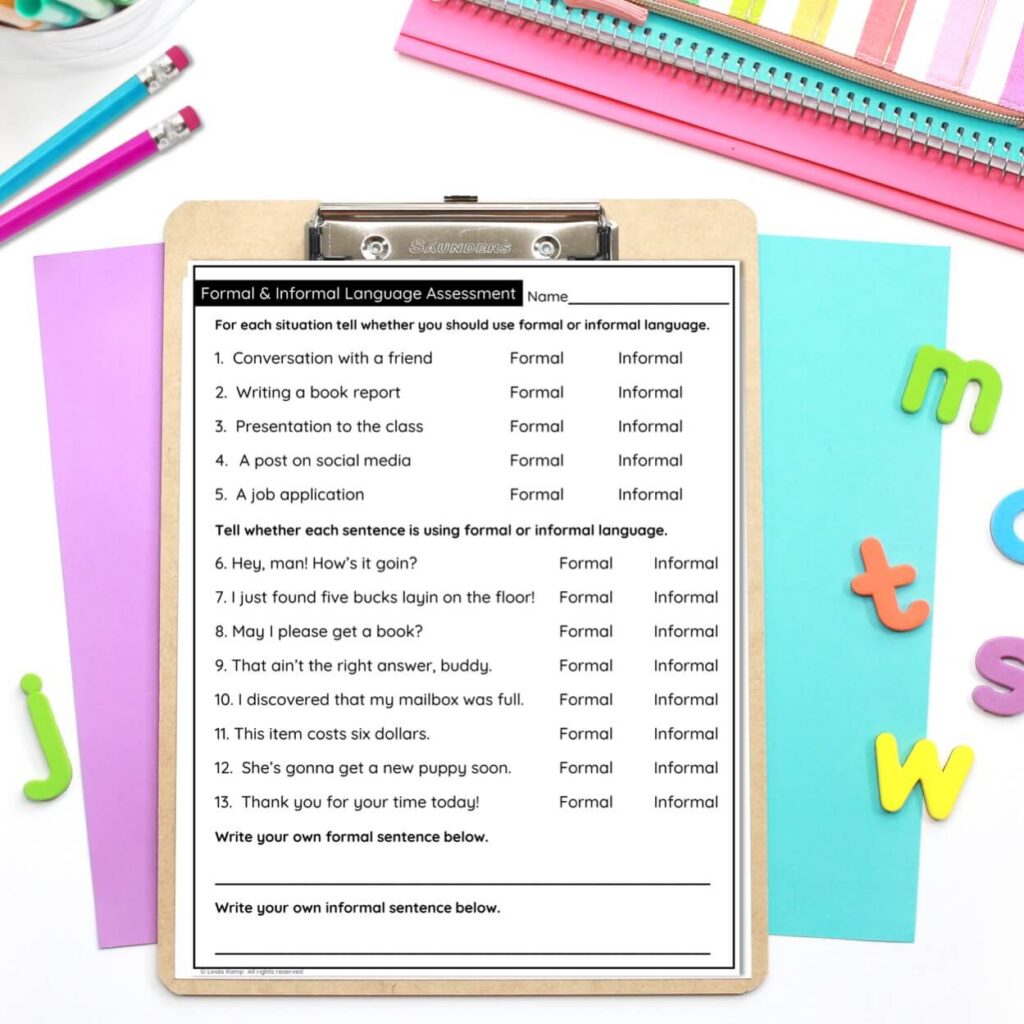
By the end of your unit, students should be able to distinguish between formal and informal language, determine which situations warrant each type of language, and generate examples of both formal and informal language on their own.
Formal and Informal Language Lesson Plans
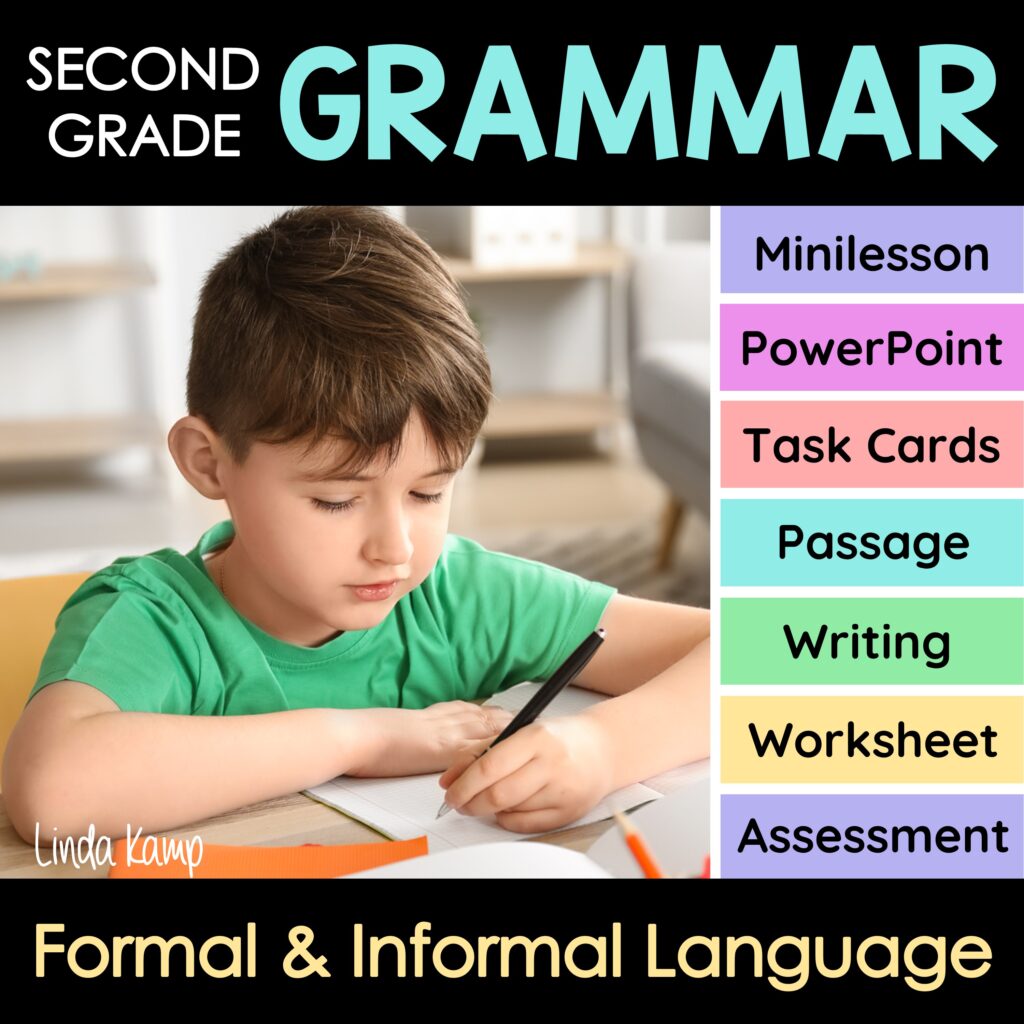
Try these activities to help your students learn more about this topic. If you’re looking for more resources, I’ve created a Formal & Informal Language grammar unit that is easy to implement and engaging for students. Click HERE for the a yearlong series of second grade grammar units.

Be sure to pin this post for later!

Need more ideas for teaching grammar? Check out these posts:
2nd Grade Grammar Curriculum That Fits Any Schedule
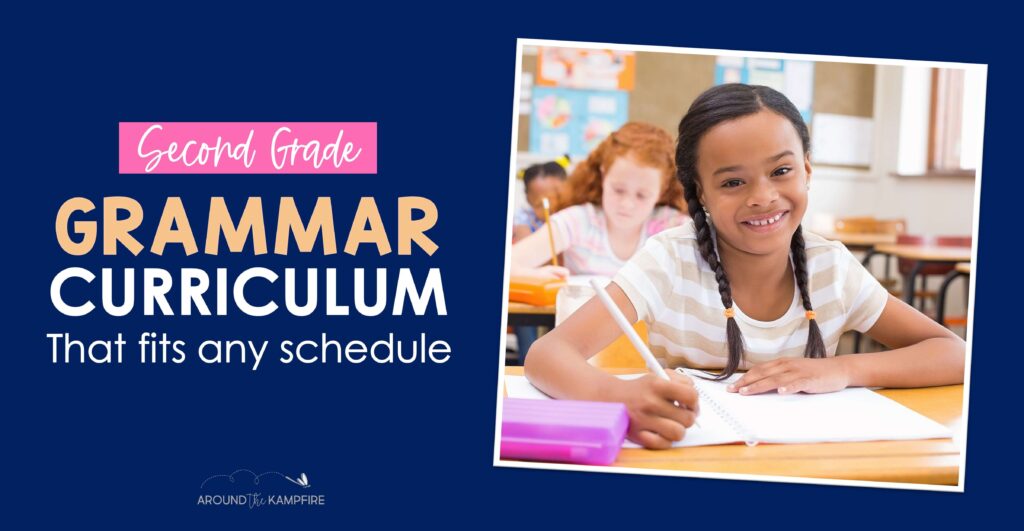
8 Ways to Differentiate Grammar Activities & Reach All Learners

Free Second Grade Grammar Assessment Toolkit for Teachers


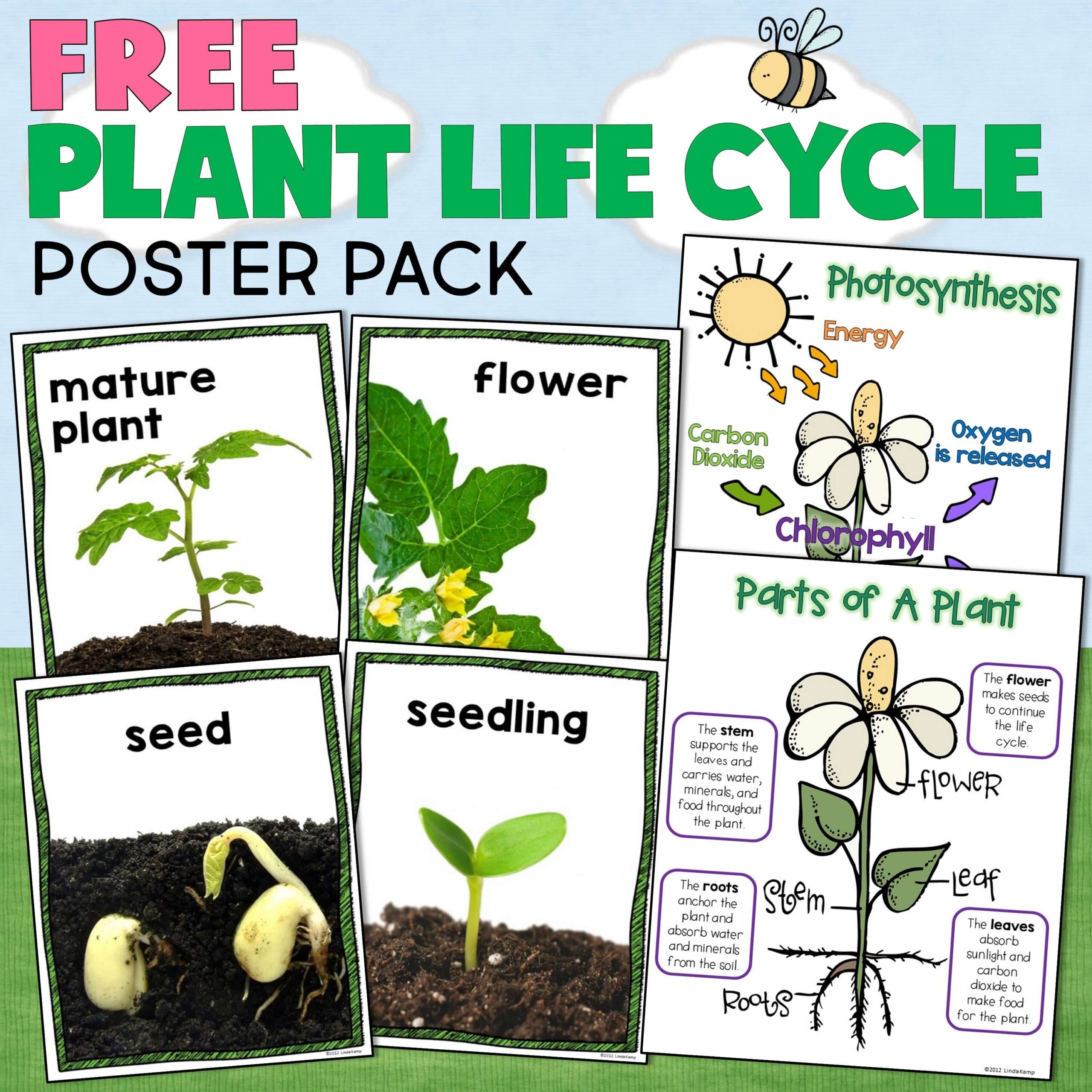




Leave a Comment